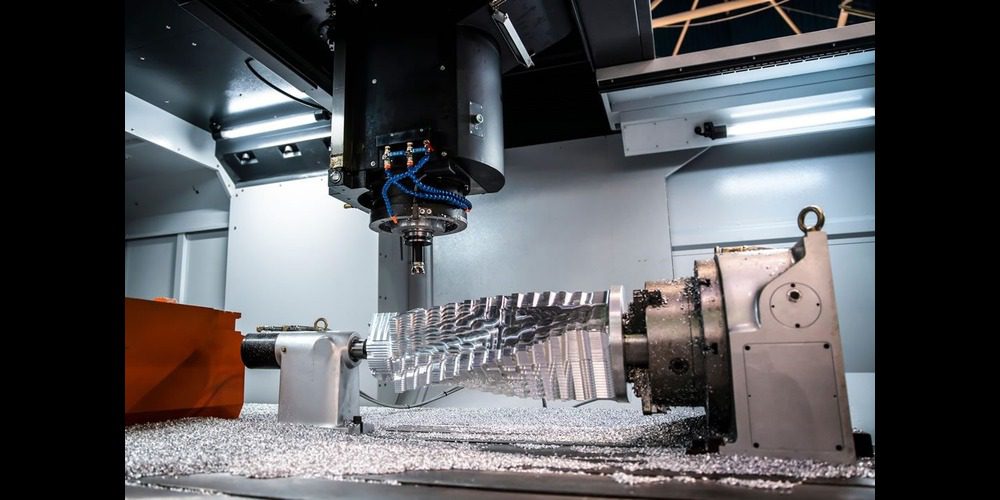The Art and Science of CNC Machining: Finding the Balance

Computer numerical control (CNC) machining is a manufacturing method in which factory machines are controlled by preprogrammed computer software. Using this technology, complex shapes, and high-precision parts can be automated from a range of materials, including metals, plastics, and composites. By converting digital designs into detailed instructions, CNC machines produce components with exceptional precision and efficiency.
The importance of CNC machining in modern manufacturing cannot be overstated. Keeping competitive in today’s market requires machines that offer efficiency, affordability, and cost-effective operation. CNC machining is an indispensable tool in the industrial landscape due to its ability to produce high-quality parts while reducing waste and labor costs.
Understanding the nuances of CNC machining helps businesses and manufacturers understand the importance of selecting the right CNC equipment. It is not only the quality of output that is impacted by the choice of machine but also the innovation and productivity of operations. Our discussion will focus on how to find the perfect balance between art and science for CNC machining, emphasizing the strategic selection of machines to meet the unique needs of different industries.
Understanding CNC Machines: Types, Benefits, and Limitations
CNC machining involves many machines designed to meet the needs of a wide range of manufacturing processes, each with its benefits and limitations. CNC milling machines, turning machines, and laser cutters are among the most common machines.
CNC milling machines are known for their versatility, capable of cutting, drilling, and shaping materials across a wide range of specifications. Due to their adaptability, they are indispensable for creating complex parts with high precision. Although milling machines are extremely versatile, their setup and programming can be time-consuming, requiring skilled operators. It is within this category that some mills are specially designed for tasks such as tensile sample preparation, which provides the precision needed for creating consistent test specimens.
Lathes, or turning machines, are also cornerstones of CNC machining, primarily used for producing cylindrical parts by rotating a workpiece against a cutting tool. They excel at operations requiring high levels of symmetry and surface finish, such as rods and shafts. Their application, however, is mainly limited to parts with rotational symmetry, which may not be appropriate for all projects.
With laser cutters, you can cut and engrave with exceptional precision, using focused light beams. Suitable for detailed work on metals, plastics, and other materials, these machines offer speed and accuracy that mechanical cutting methods cannot match. Laser processing depends on the material’s properties since not all materials are suitable.
In the manufacturing process, CNC machines offer a variety of advantages, from the broad capabilities of milling machines to the specialized precision of laser cutters. Almost any design challenge can be met with a CNC solution thanks to its wide range of capabilities.
CNC Machine Selection: Key Considerations and Efficiency
The ideal CNC machine for your manufacturing needs requires careful consideration of several factors to ensure that the investment aligns with your specific needs. Making an informed decision requires evaluating the following factors:
- Material Compatibility: Make sure the CNC machine can handle the types of materials you plan to use, whether they are metals, plastics, composites, or other types of materials.
- Complexity of the Work: Take into account the complexity of the parts you plan to manufacture. Complex designs may require machines with higher precision and versatility, whereas simpler tasks may not.
- Volume and Size: Determine your production volume and part size. A robust machine with a fast operation speed is crucial for high-volume production. For smaller, customized tasks, however, a compact CNC machine might be more efficient and flexible.
- Cost-effectiveness: Larger, more expensive machines may seem like the best option, but they are not always the best. A compact machine can often provide a more cost-effective solution for specific tasks, delivering high-quality results.
- Reputation of the Manufacturer: It is crucial to purchase CNC machines from reputable manufacturers who specialize in CNC machining or related fields, such as tensile testing. These manufacturers guarantee machinery quality and provide valuable after-sales support, including maintenance, training, and technical assistance.
The best CNC machine is not the biggest or the most expensive. It’s the one that is most efficient and suitable for your application. Businesses can invest in CNC technology that enhances their production capabilities and drives innovation by considering the material, complexity, volume, cost-effectiveness, and reputation of the manufacturer.
Maximizing Efficiency with CNC Machining: Advanced Techniques and Software
To maximize CNC machining efficiency and productivity, advanced techniques and software are crucial. As a result of these innovations, manufacturing processes are not only streamlined, but also precision, flexibility, and optimization are improved. By leveraging cutting-edge technology and software solutions, we can significantly enhance CNC machines’ capabilities, ultimately resulting in higher-quality products and more efficient manufacturing processes.
Integration of CAD/CAM Software
CNC machining relies heavily on Computer-Aided Design (CAD) and Computer-Aided Manufacturing (CAM) software. Through CAD/CAM software, digital designs can be seamlessly translated into precise machining instructions. It not only speeds up production but also minimizes errors, making sure each part meets its specifications. Simulating and adjusting designs before machining reduces material waste and improves efficiency.
Adaptive Machining Techniques
Adaptive machining techniques adjust cutting conditions in real-time based on feedback from the machining process. With this adaptability, cutting speeds and feed rates can be optimized, which reduces machining time and extends tool life. Adaptive machining ensures consistent quality across all parts by dynamically responding to variations in material hardness, thickness, and geometry.
Automation and Robotics
Automation and robotics further improve efficiency and consistency in CNC machining centers. Automated tool changers, for instance, increase machine uptime and reduce setup times, while robotic arms can load and unload parts, enabling round-the-clock production. The manufacturing process becomes faster and more reliable with this level of automation, which minimizes human error and labor costs.
Predictive Maintenance
By forecasting potential failures before they occur, predictive maintenance software minimizes unexpected downtime. Machine sensors and artificial intelligence algorithms analyze data to predict wear and tear. With this proactive approach to maintenance, machines are kept running at their peak efficiency, and repairs and replacements are scheduled in a way that minimizes the impact on production.
Read More From Techbullion





